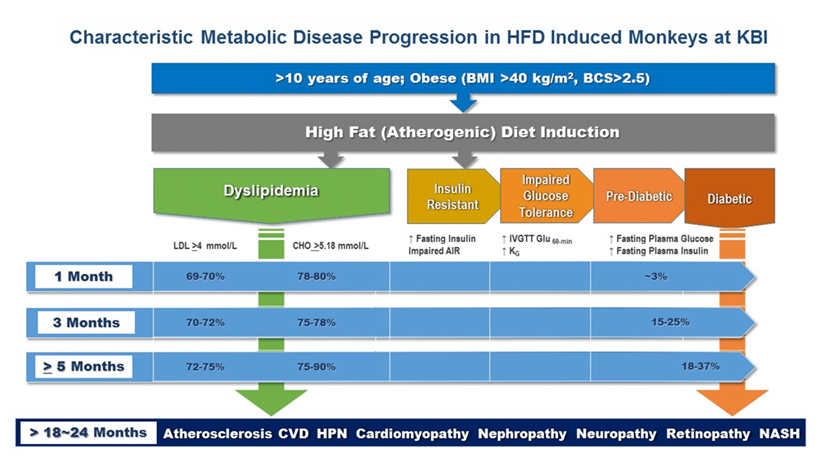Kunming, China, October 14, 2016
KBI has more than 1,000 monkeys at stages of pre-diabetes, overt diabetes and diabetes with complications for the evaluation of new drugs:
· Pre-diabetes (hyperinsulinemia, impaired glucose tolerance, insulin resistance)
· Type 2 diabetes with hyperinsulinemia and hypoinsulinemia
· Diabetic nephropathy
· Diabetic retinopathy
· Diabetic Neuropathy
A full array of comprehensive tools are well established for the detailed characterization at various stages including:
· Clinical chemistry for metabolic profiling
· Oral glucose tolerance test (OGTT), intravenous glucose tolerance test (IVGTT) and insulin tolerance test (ITT)
· Oral lipid tolerance test (OLTT) and meal tolerance test (MTT)
· Graded glucose infusion (GGI)
· Hyperinsulinemic-euglycemic clamp
· GI-bypass and gastric emptying

The KBI proprietary high-fat diets formulated to replicate the Western-type diet in humans have been used to successfully develop metabolic syndrome, dyslipidemia,
diabetes and associated co-morbidities in monkeys.
Contact us if you need more information.